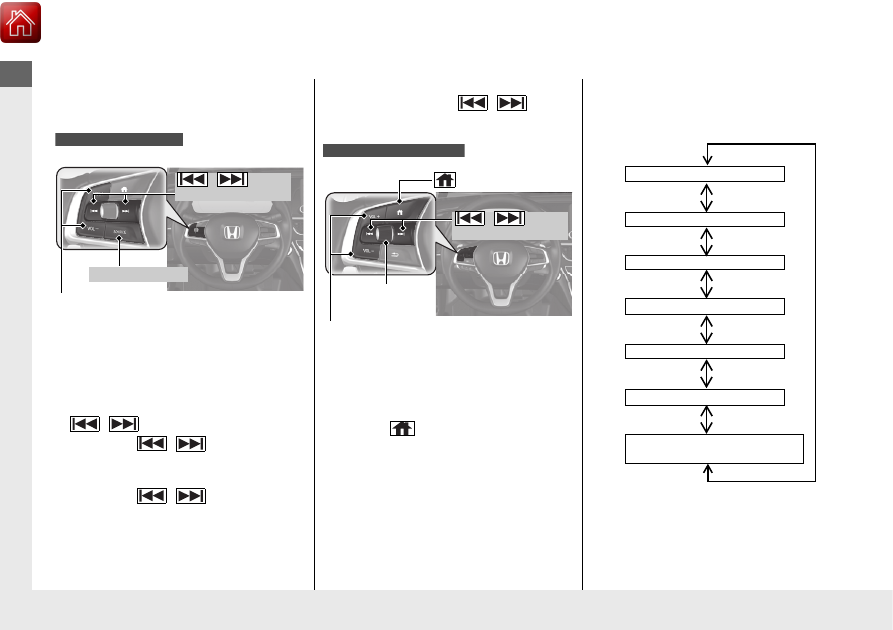Honda Accord (2019 year). Manual - part 2

16
Quick
Referenc
e Guide
Features
Audio Remote Controls
● VOL
(
+/VOL
(
- (Volume) Buttons
Press to adjust the volume up/down.
● SOURCE Button
Press to change the audio mode:
FM1FM2AMUSB/iPodPandora®
Bluetooth® Audio.
●
/
(Seek/Skip) Buttons
Radio:Press
/
to change the
preset station.
iPod, USB device, or Bluetooth® Audio:
Press
/
to skip to the
beginning of the next song or
return to the beginning of the
current song.
Models with color audio
/
(Seek/Skip) Buttons
SOURCE Button
VOL
(
+/VOL
(
- (Volume) Buttons
● VOL
(
+/VOL
(
- (Volume) Buttons
Press to adjust the volume up/down.
● Left Selector Wheel
When selecting the audio mode
Press the
(home) button, then roll up
or down to select Audio on the driver
information interface, and then press the
left selector wheel.
USB device:
Press and hold
/
to
change a folder.
Models with Display Audio
/
(Seek/Skip) Buttons
Left Selector
Wheel
VOL
(
+/VOL
(
- (Volume) Buttons
(home) Button
FM
AM
SiriusXM®
*
USB1
USB2
*
Bluetooth® Audio
Smartphone Connection
(Apple CarPlay/Android Auto)
Roll up or down: To cycle through the
audio modes, roll up or down and then
press the left selector wheel: